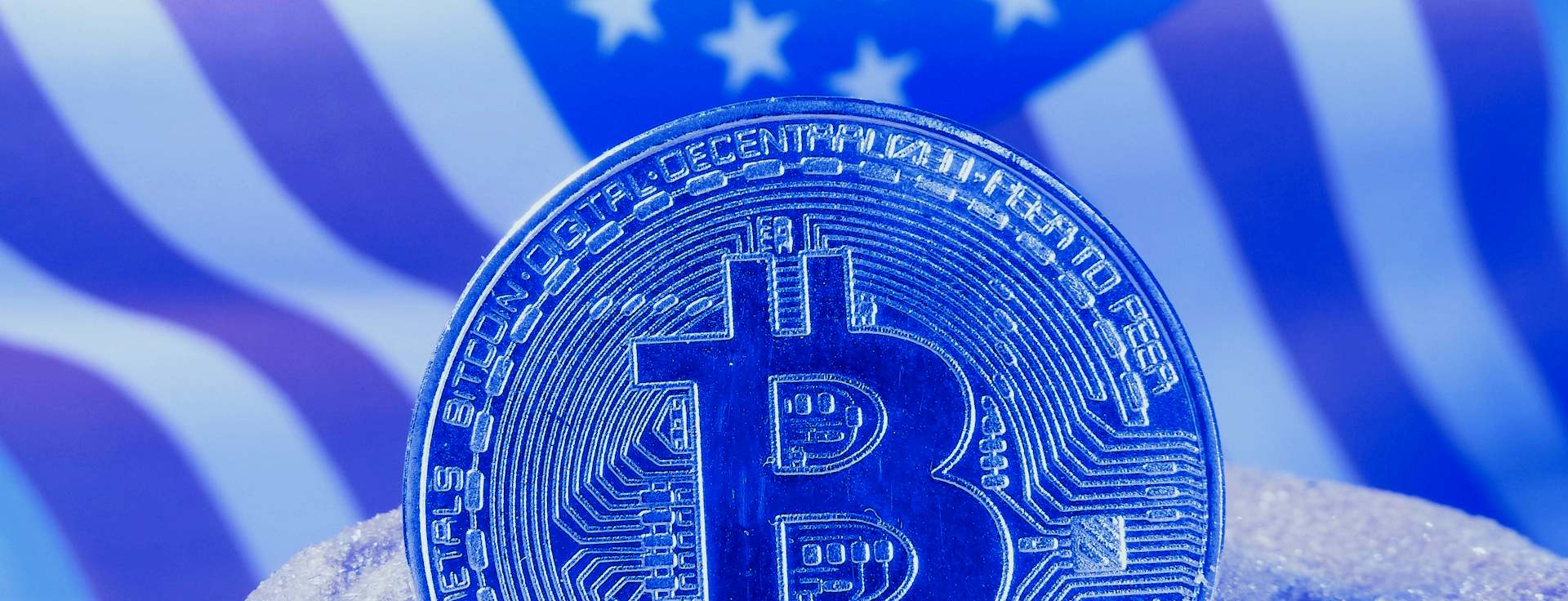
The year 2021 for cryptocurrencies will be remembered for the new all-time highs for several cryptocurrencies, but also for the price collapse in May. The most significant events of the year include China's ban on Bitcoin mining and El Salvador's decision to make Bitcoin legal tender. This article reviews the price movements and major events in cryptocurrencies in 2021.
First quarter
Many came into 2021 with high expectations, as it was in December 2020 that Bitcoin had broken a three-year-old all-time high. The start of the year for cryptocurrencies met and certainly even exceeded many expectations as Bitcoin and other cryptocurrencies continued the rise that had begun at the end of 2020. Bitcoin started the year at around 24,000 euros and by mid-February, its price had already doubled. The price of Ethereum, on the other hand, almost tripled from the beginning of the year to mid-February, rising from around 600 euros to almost 1,700 euros.
The rise in Bitcoin and other cryptocurrencies at the beginning of the year was influenced by, among other things, electric car manufacturer Tesla and its CEO Elon Musk. In late January, Musk wrote "#bitcoin" to his bio on a community and microblogging service on Twitter. Shortly afterward, Tesla announced that it had purchased more than € 1.3 billion worth of bitcoin. In addition to the purchase of bitcoin, Tesla announced in March that it accepts bitcoin as a payment method. Quite significant Bitcoin news was also received in February in connection with another US company. MicroStrategy, a provider of business intelligence solutions, cloud-based services, and mobile software, announced that it had raised around € 900 million in convertible notes and bought almost 20,000 bitcoin with the proceeds. MicroStrategy began purchasing bitcoin in August 2020 and at the end of 2021, it owned almost 125,000 bitcoin worth over € 5 billion.
During the first quarter, positive cryptocurrency news was also received in connection with US banks. In February, the oldest bank in the United States, BNY Mellon, announced plans to custody its customers' cryptocurrencies. Meanwhile, Morgan Stanley, which manages more than € 1 trillion in funds, began offering the opportunity to trade in three Bitcoin funds for its asset management clients in March. Also, several other banks in both the United States and Europe announced their own plans for cryptocurrencies as the year progressed.
Second quarter
The second quarter started very positively in terms of cryptocurrency prices, with the price of Bitcoin rising to over 54,000 euros in April. Also, the price of Ethereum increased sharply, reaching more than 3,600 euros in May, which was about six times the price at the beginning of the year. The mood in the cryptocurrency market at the time was very optimistic and more and more people started talking about even a 100,000-dollar-bitcoin. However, In May the mood in the market changed abruptly and there was even fear and panic in the market as prices of almost all cryptocurrencies collapsed by at least 50% in less than ten days.
There were several factors behind the spring collapse in cryptocurrency prices. However, probably the most significant of these was China’s ban on cryptocurrency mining. Several Chinese provinces banned the mining of cryptocurrencies in May and June. The ban was very significant for Bitcoin, as it was estimated that more than half of Bitcoin mining took place in China before the ban. As a result of the ban, Bitcoin hashrate i.e. the computational power used for Bitcoin mining was halved by the end of June. Most Bitcoin miners in China stopped mining at that time and relocated to countries such as the United States, Canada, and Kazakhstan, which had a more positive attitude towards cryptocurrencies. Despite the drop in hashrate, many experts saw China’s mining ban as a good thing for Bitcoin, as it improved one of the most important features of the Bitcoin network, namely decentralization. Also, Elon Musk and Tesla had an effect on the decline of cryptocurrency prices, as Tesla announced that it stops accepting bitcoin as a payment method and sold 10% of its bitcoin holdings. Tesla justified its payment decision with Bitcoin's consumption of fossil fuels.
There was also some positive news regarding cryptocurrencies and Bitcoin in particular during the second quarter. In early June, at the Bitcoin conference in Miami, an announcement was made that will remain one of the most significant events in the history of cryptocurrencies. It was El Salvador’s announcement that this Central American country with a population of 6.5 million will become the first country in the world to make Bitcoin legal tender and publicly buy bitcoin.
Third quarter
At the beginning of the third quarter, cryptocurrency prices had not yet recovered much from May’s collapse. The mood in the market was generally not very optimistic and many felt that the peak of this bull market, which began with the halving of the Bitcoin block reward in 2020, had been seen and that there would now be a further downturn and longer bear market. However, some were still hopeful and believed that the uptrend would continue and that the peak of this bull market had not yet been seen. The view of the latter group received more support as the prices of several cryptocurrencies rose by 100% of the summer lows as a result of the upward trend in the late summer and early autumn.
The most significant cryptocurrency news in the third quarter was related to Ethereum’s update and the introduction of Bitcoin as legal tender in El Salvador. Ethereum received an update on its way to Ethereum 2.0 when the London update was activated in August. Among other things, the update improved the predictability of Ethereum's transaction costs and reduced the variability of transaction costs. In addition, the update affected how much Ethereum's own Ether currency will be issued. As a result of the upgrade, part of Ethereum's transaction fees began to be burned. Due to the burning, less of Ether will come to the market, which is a positive thing for Ethereum's future price development.
El Salvador adopted Bitcoin as legal tender alongside the dollar in early September. Consequently, it became possible to pay with bitcoin at major global chains such as McDonald’s, Pizza Hut, and Starbucks, among others in El Salvador. Furthermore, El Salvador launched the Bitcoin wallet app Chivo, which gained immense popularity in a very short time. The number of Chivo users exceeded 2.7 million in less than a month, which meant that Chivo had more users in El Salvador than traditional banks. Transactions in the Chivo wallet take place on the Lightning Network, which operates on top of Bitcoin, where Bitcoin transfers are virtually immediate and free. The use of the Lightning Network increased significantly during 2021, and in addition to El Salvador, for example, Twitter integrated the Lightning Network into its service. In addition to the introduction of bitcoin as a payment method, El Salvador also purchased bitcoin. At the end of the year, El Salvador had a total of approximately 1,400 bitcoin worth approximately € 60 million as a result of several acquisitions.
Fourth quarter
The fourth quarter started positively in terms of cryptocurrency prices, with Bitcoin and Ethereum, among others, rising to new all-time highs of almost 60,000 euros and more than 4,200 euros as a result of several weeks of uptrend. However, as the end of the year approached, prices started to fall and the year ended in a rather contradictory mood.
The most important cryptocurrency news in the fourth quarter was related to Bitcoin's Taproot update and El Salvador's Bitcoin-related operations, among others. However, probably the most significant news at the end of the year was the launch of the first long-awaited Bitcoin ETF, i.e. an exchange-traded fund, in the United States. In October, stock exchange product provider ProShares's Bitcoin futures ETF started trading on the New York Stock Exchange. The futures ETF contains Bitcoin futures instead of "real" bitcoins, as the name implies. ProShares's ETF was traded actively on the first day, with a trading volume of approximately € 850 million, making it the second-largest ETF ever in terms of the trading volume. On the other hand, based on the assets raised, ProShares's ETF was the most popular of all time, raising more than $ 1 billion in just two days. In addition to the ETF discussed above, two other Bitcoin futures ETFs began trading in the United States in 2021. Although the ETFs released in the United States in 2021 were not ETFs containing bitcoins, they were still welcomed and the releases were probably contributing to the rise of Bitcoin to a new all-time high. These ETFs are particularly conducive to the entry of institutional actors into the cryptocurrency market, due in part to the clear regulation of the ETF and established accounting practices, as well as the ease of purchasing. In addition to the United States, There were ETF launches related to Bitcoin and other cryptocurrencies in Germany, Canada, Australia, and Brazil, among others during 2021.
At the end of the year, Bitcoin received the most significant upgrade in four years, when the Taproot upgrade was activated in November. The update enhanced, for example, the privacy and scalability of the Bitcoin network. Moreover, Taproot improved the conditions for the operation of smart contracts and reduced transaction costs. In addition to the actual upgrade, Bitcoin took further steps in El Salvador at the end of the year. In October, El Salvador mined its first bitcoins with geothermal heat from the volcanoes. Geothermal heat from volcanoes is a very clean source of energy available around the clock with no real downsides. Besides mining, the world's first Bitcoin City will be established in El Salvador. This Bitcoin City gets all its energy from the volcanoes, and this energy is also used to mine bitcoin. The city will have no CO2 emissions at all and will also be almost completely tax-free, as city residents will not have to pay any taxes other than VAT. In addition, El Salvador is issuing a billion-dollar tokenized Bitcoin bond. About half of the funds raised through the bond will be used to build infrastructure related to the Bitcoin City and half to purchase bitcoin.
Summary
2021 was a very interesting and unpredictable year in terms of both cryptocurrency price movements and news related to cryptocurrencies. Several cryptocurrencies exceeded their previous all-time highs by several times during 2021, but on the other hand, the year also included price collapses, such as the collapse in May, when prices of practically all cryptocurrencies dropped by at least 50% in just over a week. The most significant phenomena of the year in the cryptocurrency world can be summarized from my perspective in three main points:
- Significant and very different measures related to Bitcoin by countries such as China and El Salvador
- The institutional interest towards cryptocurrencies continued to grow, as evidenced by the
Tesla's bitcoin purchase and several Bitcoin ETFs in the United States and around the world
- The popularity of Ethereum and other platforms and the DeFi services on top of them continued to grow tremendously and the number of users multiplied during 2021
We are going into the year 2022 in a rather uncertain mood as a result of falling prices at the end of the year. In recent years, cryptocurrencies have grown into a reckoned asset class and, as a result, their price movement is increasingly affected by the general economic and market situation. Inflation numbers in the United States and Europe have recently risen to levels not seen for several decades. Does rising inflation force central banks to tighten monetary policy by raising interest rates, and what effect would this have on the market? Assessing possible measures by central banks and their impact in advance is very challenging and only time will tell how this will progress. What is certain, however, is that there will be an interesting year ahead for cryptocurrencies and the entire market.
Ville Viitaharju
Cryptocurrency specialist
Last updated: 10.03.2022 13:55





